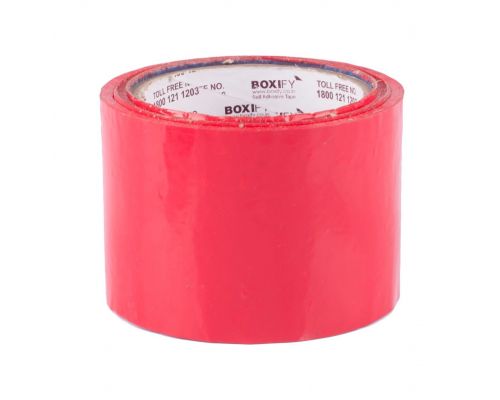Adhesive tapes, also known as sticky tapes or self-adhesive tapes are very common and widely used items in our daily lives. They find applications in a variety of industries from packaging to medical.
Packaging Applications
Packaging is perhaps one of the largest application segments for adhesive tapes. Pressure-sensitive tapes are extensively used for packaging, sealing, binding, and protecting a wide variety of products. Carton sealing tapes and packing tapes are commonly used for closing cardboard boxes and other packaging during shipping and transportation. Strapping tapes help reinforce heavy packages and bundles. Masking tapes are used in the construction of packages for graphics and labeling. Specialty tapes like insulating tapes, lint tapes, and filament tapes serve industrial packaging needs.
Office and Stationery Uses
In offices and for stationery purposes, adhesive tapes are indispensable items. Scotch tapes and cello tapes are commonly found in every desk for sealing envelopes, parcels, and other documents. They are also used for gift wrapping. Double-sided tapes help mount posters, charts and other materials on walls and boards. Clear packing tapes provide extra strength to bind folders, reports and files. Sticky notes with repositionable adhesives have become a basic office stationery item.
Medical Applications
Specialized medical adhesive tapes are extensively employed in healthcare facilities and for first aid purposes. Surgical tapes are designed not to trauma skin during removal and find use in wound care, bandaging and dressing. Micropore tapes are breathable and used for sports injuries. Transparent medical tapes help secure IV lines, tubes and electrodes. First aid tapes help cover small cuts, bruises and protect wounds. sports tapes provide support to joints and muscles. Body mapping tapes are used in therapy.
Electronics and Electrical Uses
In the electronics and electrical industry, adhesive tapes play a critical role. Insulation tapes provide dielectric protection and help insulate wires and cables. Bonding tapes are employed for joining and grounding in circuit boards and components. Double-sided conductive tapes help mount and connect electrical and electronic parts. Specialty tapes like antistatic tapes prevent electrostatic discharge damage. Heat-resistant tapes withstand high temperatures in industrial applications.
Automotive Applications
The automotive industry makes extensive use of various adhesive tapes due to their easy application and bonding capabilities. Duct tapes are used extensively during the assembly of vehicle parts and components. Masking tapes help apply decals, graphics and paint trim. Wiring tapes organize and bind cable harnesses. Heat-resistant tapes provide insulation under the hood. Other specialty tapes for headlights, and trim-work bonding provide protection from harsh under-the-hood conditions.
Home Improvement Uses
At home, adhesive tapes have many practical applications related to repair, installation, and decoration purposes. Duct tapes are a common fixture in every household for quick repairs, bindings and insulation. Packaging tapes help in moving boxes during relocations. Double-sided carpet tapes fix flooring and rugs. Masking tapes aid do-it-yourself projects like painting and wallpapering. Decorative tapes add finishing touches and hold balloons or other decorative items.
Advancements in Adhesive Tape Technology
Over the decades, adhesive tape technology has advanced significantly to meet the changing requirements of industries and users. From conventional paper-backed tapes, new tapes with advanced adhesives, substrates and reinforcement materials have emerged. Some key advancements include:
– Specialty Adhesives: New formulation adhesives like acrylics, rubbers and silicones provide superior adhesion, high/low-temperature resistance, and moisture resistance based on application needs.
– Thin and Speciality Substrates: Thinner poly, film and foam substrates provide strength and conformability. Stretchable fabrics make tapes elastic. Breathable and porous substrates enable use in medical applications.
– Reinforcements: Fiberglass, Kevlar and scrim materials reinforce tapes for heavy-duty uses. Carbon nanotube additives enhance conductivity, strength.
– Printing Technology: Digital printing enables custom designs, logos and branding on tapes expanding their applications.
– Environment-Friendly Tapes: Biodegradable, recyclable tapes address sustainability with natural and eco-friendly composition.
With advancements like these, adhesive tapes will continue to find expanding uses in new applications and industries. Innovation will further widen the versatile role of tapes across different sectors.
Sustainability Concerns and Alternatives
While adhesive tapes effectively serve multiple purposes, their popularity and extensive use also raise environmental concerns related to disposal and non-biodegradability. Large quantities of used tapes end up in landfills or as litter. Plastic-backed tapes release microplastic pollutants and take a very long time to degrade.
– Biodegradable paper tapes made from renewable plant fibers decompose safely without harming the environment.
– Natural rubber and botanical adhesives replace synthetic formulations, reducing plastic waste.
– Compostable starch and corn-based films act as alternative substrates for tapes.
– Recycling programs help recover and reuse adhesive tapes to promote a circular economy.
– Re-stickable and repositionable tapes minimize waste by multiple re-uses.
– Customized roll sizes reduce excess material usage from partial rolls.
With growing awareness towards sustainability, alternatives to conventional plastic tapes will likely gain prominence in the future alongside continuous technological enhancements.
Adhesive tapes have come a long way from simple sticking materials to advanced functional products tailored for diverse applications. Constant innovation will ensure these versatile tapes stay relevant while addressing sustainability concerns through bio-based alternatives. Their ease of use and bonding properties make them indispensable across industries and in our daily lives.
*Note:
1. Source: Coherent Market Insights, Public sources, Desk research
2. We have leveraged AI tools to mine information and compile it

